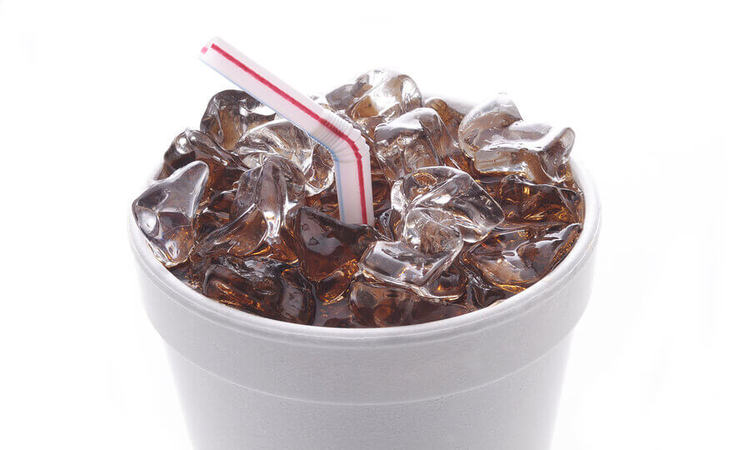
Lean is a liquid drug “cocktail” that consists of prescription cold medication, a soft drink such as Sprite, and hard candy. It’s also known as purple drank, purple lean, and sizzurp, among other names.
The prescription cough syrups contained in the lean drug typically contain codeine, an opioid that is used as a cough suppressant but can also produce pain relieving and sedating effects. The antihistamine promethazine is another potential ingredient, and can also cause sedation and the impairment of motor functions.
When codeine is consumed in large amounts, it can result in extremely harmful effects. Because the drug is in the form of a drinkable liquid, consumers can quickly lose track of how much of the psychoactive ingredients they have consumed. This is mainly due to the cough syrup’s flavor being masked by soda and candy, and this is where the real danger lies.
Also, the combination known as lean or purple drank has been touted as a desirable high by several celebrities, most notably musicians such as Lil Wayne and Justin Bieber. While lean’s “cool” media presence may compel young people to use, the reality is, even those who have been credited with making the concoction famous have suffered from health problems -for example, Lil Wayne reportedly began having seizures several years ago after a long history of lean abuse.

There have been a view notable celebrity deaths associated with lean, as well. In November 2000, DJ Screw, who popularized the drink, died of a codeine-promethazine-alcohol overdose. Then in October 2007, Big Moe, a DJ Screw protégé who has been described as having “rapped obsessively about the drug” died at age 33, after suffering a heart attack, and it was believed that purple drank may have played a key role in his death.
Side Effects of the Lean Drug
Side effects may gradually increase as a person drinks an increasing amount of lean. First-time users, however, may also experience unpleasant side effects such as dizziness, blurred vision, nausea, and memory impairment.
The routine use of purple drank can also cause widespread health issues. Individuals who drink lean on a regular basis report suffering from tooth decay and other dental problems, constipation, unwanted weight gain, and urinary tract infections.
People who engage in prolonged abuse of purple drank or use the drug in a sufficiently large amount may also experience life-threatening complications such as an overdose, particularly when its used in combination with other depressant drugs or alcohol.
Lean Drug Addiction
Codeine, an opioid, the psychoactive ingredient in purple lean is behind its desirable yet hazardous effects. Opioids are a class of drugs linked to an extremely high rate of abuse and dependence.
The incredibly addictive nature of opioids is due, in part, to the rewarding and pleasant effects that they induce, including euphoria, relief from anxiety, and decreased aggression.
Because codeine is legal when prescribed and many people use it to manage coughing or pain legitimately, it’s challenging to track rates of abuse and addiction. The chronic abuse of opioids, however, can result in the development of drug tolerance or dependence. As tolerance builds, people often find themselves needing to use increasing amounts of the drug to experience the coveted effects.
This increase in drug-using behavior can be the catalyst for the development of physiological dependence. Opioid-dependent persons are then likely to suffer from a wide range of unpleasant withdrawal symptoms when they attempt to discontinue drug use. In the early stages of withdrawal from an addictive drug, the person may experience:
- Sleep disturbances
- Agitation
- Muscle aches and pains
- Teary eyes and a runny nose
- Anxiety or depression
- Sweating
If a person has used purple drank for a prolonged period or in very high doses, they may experience more intense withdrawal effects, including nausea and vomiting, stomach cramps, and diarrhea.
To avoid, stop, or postpone withdrawal symptoms, people addicted to the lean drug will often relapse, or return to consuming the drink or other opioid drugs, thus perpetuating an endless cycle of abuse that can devastate their mental and physical health.
Treatment for Codeine Addiction
Because withdrawal symptoms caused by codeine addiction can be so unpleasant, many patients opt for an inpatient detox and then immediately transfer to an addiction treatment program.
Treatment is comprised of two formats or phases: inpatient and intensive outpatient treatment. Both include evidence-based approaches to substance abuse treatment including behavioral therapy, individual and family counseling, and support groups.
During treatment, medical and mental health staff who specialize in addiction care for patients and provide them with the skills they need to navigate a drug-free life after treatment has been completed.
At our center, we can help you regain your life free of addiction to drugs and alcohol. Please call us as soon as possible to find out how!